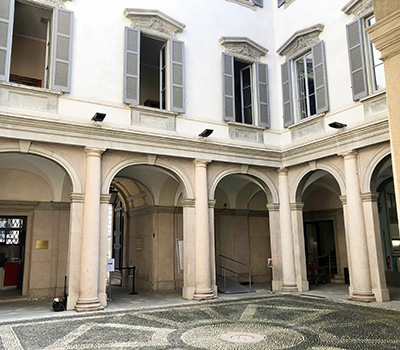Palazzo Moriggia - Civic historical collections
Moriggia Palace

Moriggia Palace, That the 1950 houses the Risorgimento museum, it was built in 1775 based on a project by Joseph Piermarini in neoclassical style close to the vast Brera complex commissioned by the marquis Giovanni Battista Moriggia, belonging to the noble and rich family of Morigi originally from Lake Maggiore.
Since the Marquis Moriggia died without heirs, the palace passed in 1787 to the accounts Besozzi and then to the Napoleonic general and Minister of War Alessandro Trivulzio (1773-1805). The building was home, in the Napoleonic era, to Foreign Ministry and, subsequently, of Ministry of War.
In 1816 the marquise acquired ownership Lucia Pallavicini of Cremona, who however never lived there. After other changes of ownership, in 1900 the palace passed to the family of de Marchi, then it was donated to City of Milan da Rosa De Marchi Curioni, widowed of the naturalist and philanthropist Marco De Marchi, and since then used as the seat of the Risorgimento Museum in Milan.
Built on a pre-existing property of the monastic order of Humiliated, has a three-storey façade with the central part marked by Doric pilasters on the lower floor and ionic on the upper floor, while the ends are a ashlar.
The arched entrance door is delimited by two columns that support a balcony with a balustrade parapet. From the portal you can access a courtyard rectangular, with porticoed sides whose arches are interspersed with semi-columns. the façades of the courtyard of honor were restored for the 150th anniversary of the unification of Italy by the Riva restoration company Italia of Enzo Medardo Costantini with the sponsorship of akzo nobel and the direction of the architect Riccardo Zanetta. On the right side of the courtyard is the grand staircase. The interiors were decorated by the painter Giuseppe Traballesi.